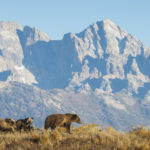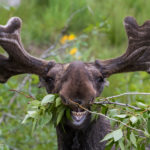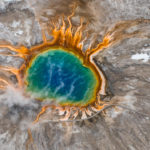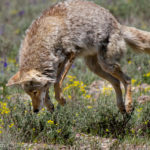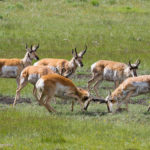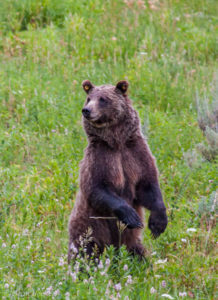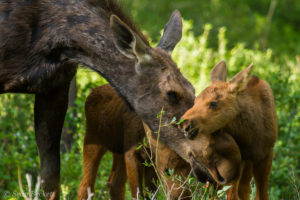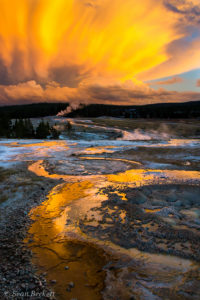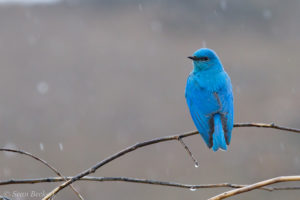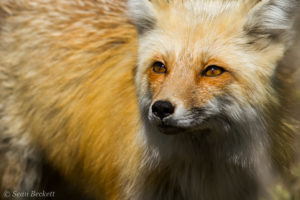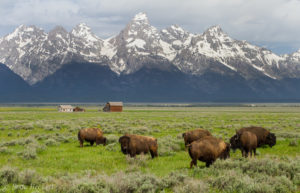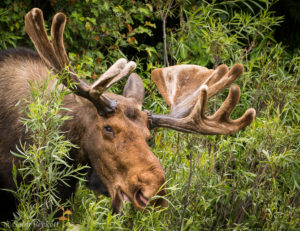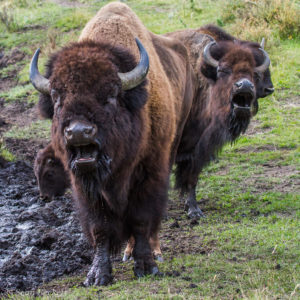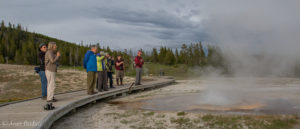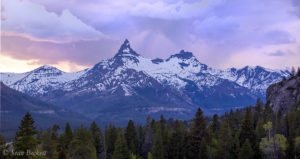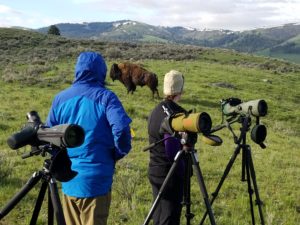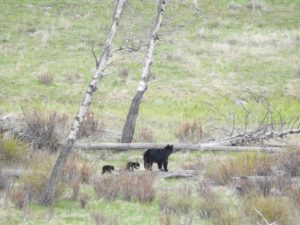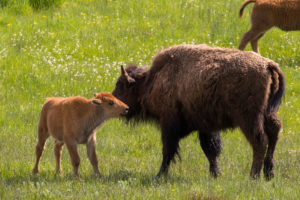Yellowstone & Grand Teton National Parks

June 3 - June 9, 2021
$3,275 | ($500 deposit due upon registration)
8 participants max
A
s the sun rises over the Rocky Mountains, the sounds of bellowing elk, croaking sandhill cranes, and howling wolves resonate across the valley. Alone in the fragrant sagebrush meadows, you encounter a herd of mother elk and newborn calves grazing in the cool morning air. On the hillsides above, you focus your spotting scope on a pair of courting black bears in the fresh alpine wildflowers at the edge of a montane glacier. Nearby, steam rises from the edge of a simmering hot spring as a great gray owl hunts in the nearby meadow. Bison and grizzly tracks skirt the orange and turquoise rim of the bubbling pool. On this week-long, small group safari into the heart of the wild, find out why the 18-million-acre Greater Yellow Ecosystem has been hailed as "America's Serengeti," "The World's Wonderland," and "The Land of Fire and Ice.”
Additional Information
Physical Requirements: Our accommodations range from rustic cabins to motel-style lodges to full service hotels. We selected lodging that positions us for the best possible wildlife viewing opportunities, while ensuring a clean, warm, and comfortable place to spend the night. Participants should be able to hike 3-4 miles per day on moderate terrain, and be comfortable with early mornings (we will generally depart our lodging at or before sunrise).
Climate: Yellowstone in winter is one of the most spectacular yet extreme climates on the continent. Temperatures may range from low 30s to high 60s, and we can expect to see sun, rain, and maybe even a little snow.
Health Considerations: This itinerary takes place between 4,000 and 8,000 feet above sea level. While this altitude is rarely hazardous, participants with a history of altitude sickness or other altitude-related conditions should consult their physician for precautions. Dehydration and sun exposure are common issues in the arid Rocky Mountains. Please come prepared to drink plenty of fluids and wear sunscreen. There are no vaccines or other travel-related medications that are typically administered for domestic travel to this destination. Tap water is safe to drink throughout the trip.
Transportation: The land transportation will be done in a 12- to 15-passenger van customized for wildlife viewing. We have limited the maximum capacity of this trip to 8 participants to allow for more space and comfort in the vans.
Wildlife: While we make every effort to spend each day seeking the most incredible wildlife viewing opportunities that the Greater Yellowstone Ecosystem offers, there is no guarantee of seeing particular species. Wildlife is capricious and unpredictable, and though your trip leader knows where to find areas and habitats with the greatest likelihood of encountering wildlife, there is always an element of uncertainty. While we cannot always predict what we see, we can promise many unforgettable wildlife encounters throughout the adventure.
This trip is led by NBNC Staff Naturalist, Sean Beckett. Sean has guided wildlife safaris and birding trips across North America for the last decade, primarily in Yellowstone and Grand Teton National Park. His experience as a top-tier Yellowstone guide is complemented by a background of wildlife research work in the Rocky Mountains that ranges from owls to deer to cougars. Sean holds a M.S. from the University of Vermont's Field Naturalist program.
Our accommodations range from rustic cabins to motel-style lodges to full service hotels. We selected lodging that positions us for the best possible wildlife viewing opportunities, while ensuring a clean, warm, and comfortable place to spend the night. In most cases, each room includes two queen beds. As our goal is to be immersed in nature for as much of each day as possible, our lodges have been selected to accomplish this both financially and programmatically.
Meals are also chosen and scheduled to maximize our time in nature. Meals will be a combination of picnic-style and restaurant options. Dinners will typically be at restaurants near or at our lodges. While we do our best to select high quality restaurants, please understand that our options are often limited due to the remoteness of our destinations.
Includes:
- Lodging accommodations
- Meals
- Transportation in customized safari vehicle
- Park entrance fees
- Expert naturalist guide
- Shared wildlife spotting scopes
- Transfers to and from the airport
Excludes:
- Airfare
- Travel and medical insurance
- Alcohol
- Gratuities
- Items of a personal nature
Ready to go to Yellowstone?
Email [email protected] to get signed up.
Itinerary
Day 1 (June 3) – Arrival and Welcome Dinner
Our flights land in Jackson Hole, the heart of the wild west. As our plane taxis across the sagebrush prairie, we may glimpse our first pronghorn antelope or golden eagle right from the tarmac. For the next two nights we’ll be hosted by Teton Science Schools, a world-renowned nexus of environmental education right in the middle of Grand Teton National Park. A centerpiece of western natural history and conservation legacy, our rustic lodging is situated in a major wildlife movement corridor and features unparalleled views of the sunset over the Tetons. After an orientation dinner, we’ll wind down to the sound of coyotes howling in the hills.
Day 2 – Grand Teton Wildlife Watching
We’ll depart early this morning to search for magnificent wildlife as a golden sunrise illuminates the glowing Teton range. Moose, coyote, bears, and bison are among the 61 species of mammals in Jackson Hole that we’ll pursue today. Along our journey, we’ll visit one of the best places in the country to see the spectacular yet threatened greater sage-grouse. After a full morning of wildlife viewing, we’ll visit the historic cabin of two of the 20th century’s most influential naturalists, Olaus and Mardy Murie. The Murie Ranch is a place of magical conservation legacy that has welcomed and inspired environmental leaders from Aldo Leopold to Jane Goodall for nearly a century. After lunch, we’ll hike into the backcountry in search of songbirds, raptors, and wildflowers. We’ll return to Teton Science Schools for a hearty dinner, followed by a campfire, stargazing, or evening birding.
Day 3 – Northern Tetons and into Yellowstone
Our adventure continues this morning in the northern reaches of Grand Teton National Park. Here we may witness newborn elk calves among the large herds that frequent the expansive willow flats, or even glimpse a grizzly bear hunting in the meadows. We’ll enjoy sandhill cranes, trumpeter swans, and American white pelicans foraging in the foreground of America’s most spectacular vistas. After a big brunch along the scenic shores of Jackson Lake, we’ll venture north into Yellowstone. As we travel through the nation’s first National Park, we’ll encounter our first hot springs, steam vents, and geysers. We’ll settle into our lodging just a stone’s throw away from Old Faithful, and take an evening hike through the world’s most spectacular geothermal features.
Day 4 and 5 – In The Heart of Yellowstone
Today we leave Yellowstone’s volcanic interior plateau and descend into the park’s wild Northern Range. This breathtaking million-acre expanse of valleys and mountain ranges, often referred to as “America’s Serengeti,” features some of North America’s premier wildlife watching. We’ll travel through herds of bison and pronghorn in search of black bears and grizzlies foraging in the grasslands. The region is also home to Yellowstone’s most illustrious and elusive carnivore: the grey wolf. We’ll spend our afternoons exploring abandoned wolf dens, hiking to historic wolf re-introduction enclosures, and visiting other hidden destinations steeped in ecology and conservation history. We’ll also keep an eye skyward for prairie falcons, Swainson’s hawks, and great gray owls. In the evenings, we retire to the tiny mountain town of Cooke City, nestled at the base of the rugged Beartooth Mountains. This remote area of southern Montana is home our most specialized alpine inhabitants like mountain goats, pika, and rosy-finches.
Day 6 – Across the Ecosystem
As we ascend out of Yellowstone’s northern range, we’ll continue our search for wildlife in the quiet morning hours. Our journey then takes us over Dunraven Pass, where we may spot Clark’s nutcrackers foraging in the whitebark pines, or bighorn sheep clambering in the cliffs. We’ll exit the mountain pass into Yellowstone’s Grand Canyon, where we’ll witness a giant waterfall cutting a quarter-mile-deep trench through a dazzling, extinct geyser basin. From here, we follow the Yellowstone River in search of nesting harlequin ducks and American dippers, while watching out for members of the canyon’s resident wolf pack. We’ll make our way back to Jackson via the shores of the immense Yellowstone Lake, a popular stopover for migratory waterfowl like Clark’s and Western grebes. We’ll arrive at our lodge in Jackson with enough time to explore the town square and enjoy a final group dinner to celebrate our adventure.
Day 7 – Departure
Our excursion concludes this morning, but even the transfer to the Jackson Hole Airport may reward us with final glimpses of trumpeter swans and elk at the edge of town. As we await our departure flight, we’ll reflect on the week and enjoy a panoramic view of the Tetons in the morning light.
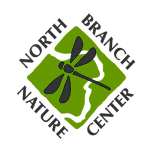
713 Elm Street
Montpelier, Vermont 05602
(802) 229-6206
Hours: Center Open Monday-Friday 9-4
Trails Open 24/7
